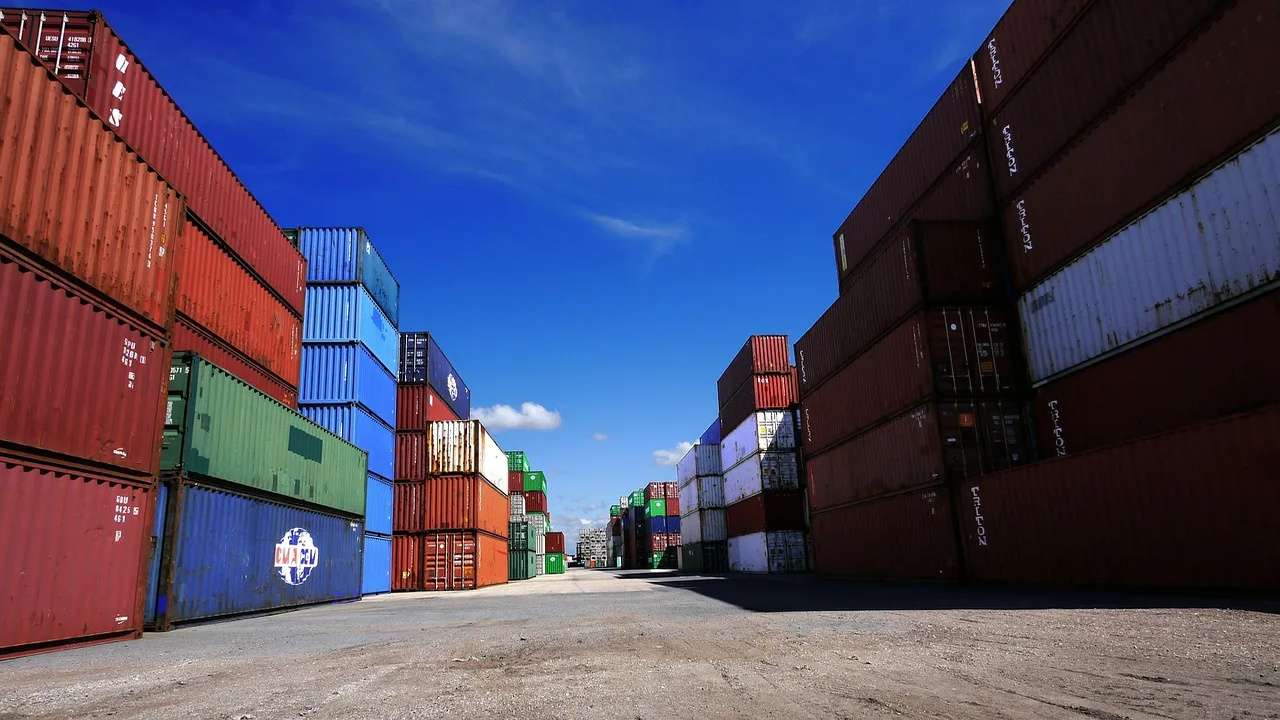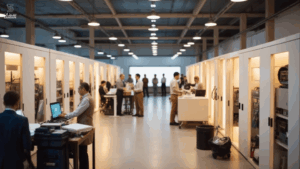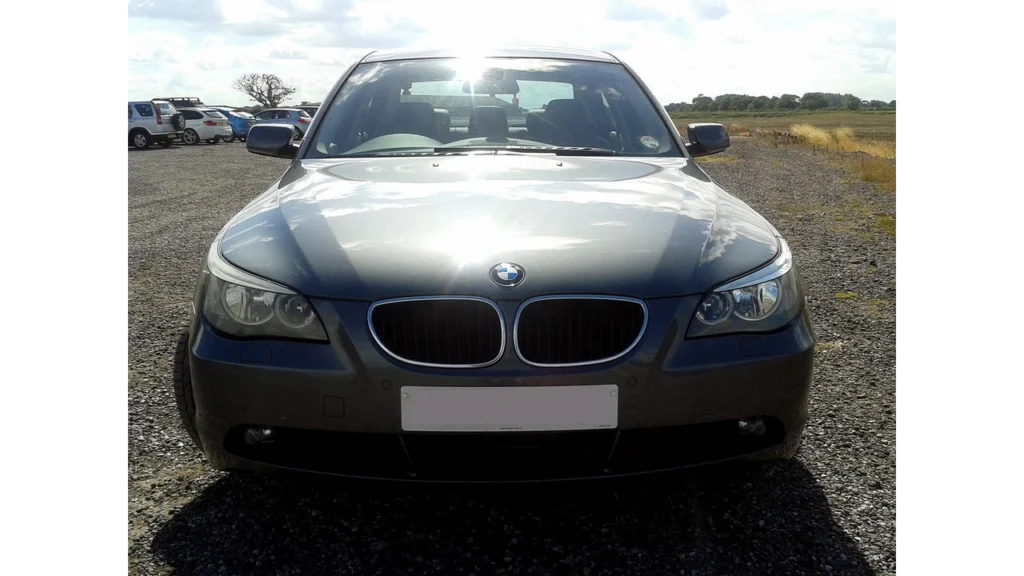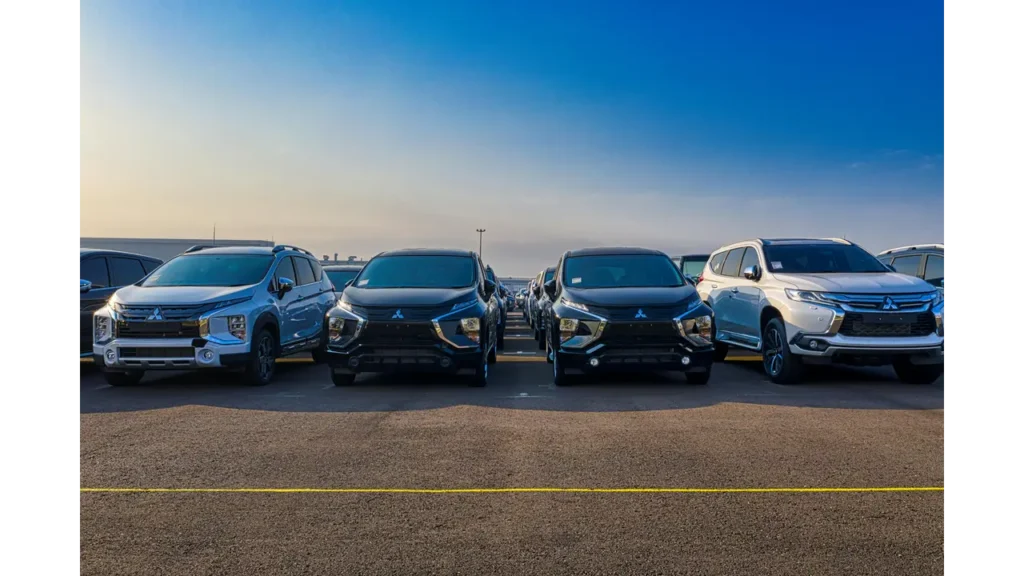Introduction
Looking for warehousing in Oman but not sure which route makes the most sense for your inventory, budget, and lead-times? You’re in the right place. Oman has quietly become the Gulf’s logistics dark horse: three deep-water ports, a brand-new rail corridor to the UAE, and economic-zone incentives that can wipe out customs duties for months. Pair that with Sandan Industrial City’s location just off the Muscat Expressway, and you’ve got a recipe for same-day delivery to most of the country—without the crowding and price tags you’ll find in Dubai or Doha.
In this guide you’ll learn how Oman’s bonded rules work, what different warehouse types cost per square metre, and how Sandan’s tech-driven facilities keep your SKUs visible 24/7. Whether you ship pharmaceuticals that can’t break 8 °C or spare parts that can’t go missing, the next ten minutes should give you a clear action plan and a few questions to ask any 3PL you speak with.
Quick Takeaways (TL;DR)
- Oman’s ports at Sohar, Salalah, and Duqm let you hedge against congestion and reroute within hours.
- Bayan Single Window allows duty-deferred storage for up to 180 days, trimming cash-flow headaches.
- Sandan Logistics offers four core options—ambient, cold chain, bonded, and e-commerce fulfilment—under one roof.
- Real-time WMS dashboards and RFID reduce cycle-count errors to under 0.3 %.
- Flexible contracts start at six months, so you can test the market without a long lease.
Table of Contents
Why Oman Is a Strategic Storage Gateway
If you plot a straight line between Asia, Africa, and Europe, Oman sits almost dead center—giving shippers a handy detour when Jebel Ali or Jeddah get jammed. Two facts highlight the shift:
- Sohar Port lifted 943 000 TEU in 2024, a 15 percent jump that shows carriers are actively redirecting boxes here rather than waiting at over-crowded Gulf hubs.
- Salalah, on the Indian Ocean side, moved about 3.3 million TEU the same year, so Oman’s combined throughput now tops 4.2 million TEU and keeps rising.
Add the 303-kilometre Hafeet Rail (linking Sohar to the UAE border in under two hours) and you get a quick, back-up land bridge when road queues at Hatta or Khatmat Malaha stretch for kilometres.
Customs works in your favour too. The Bayan Single Window lets you clear—or defer—duties online, then park cargo in a bonded area until it’s actually sold, which is a simple way to keep cash flow healthy.
For importers, that mix of multi-port access, rail redundancy, and duty-deferred storage translates into shorter lead-times and lower carrying costs—two ranking signals Google’s shoppers’ insights now emphasize when surfacing logistics providers
Sandan Logistics at a Glance
Think of Sandan Industrial City as a midpoint between Muscat’s retail districts and Sohar’s deep-water cranes. From our gate you’re:
- Twenty minutes to Muscat International Airport,
- Forty-five minutes to the Sohar highway interchange,
- And under an hour to the UAE border at Hafeet.
Inside the park we run four purpose-built zones—ambient, cold chain, bonded, and e-commerce fulfilment—so a brand can scale without trucking pallets across town every time an SKU changes temperature class.
Practical perks you’ll notice on day one:
- Build-to-suit bays from 500 m² to 10 000 m² let you expand without relocating.
- RFID at every dock door closes put-away records in under ten seconds and keeps cycle-count errors below 0.3 percent.
- Solar-ready roofs cut utility bills by roughly 18 percent; the first megawatt array alone saves 1 400 tons of CO₂ each year.
Contracts start at six months, so you can pilot a season’s demand before committing long-term—handy if you’re testing GCC e-commerce or launching a line that still needs market fit.
Types of Warehousing Solutions We Offer
Every product has its own “Goldilocks zone” for temperature, handling, and customs status. To keep things simple, Sandan bundles Omani warehousing into four tried-and-tested packages:
- Ambient / Dry Storage
Ideal for consumer goods, electronics, and industrial spares. Pallet racks rise 11 m, giving you up to 2.2 pallet positions per square metre—handy when rent is priced by the floor, not the air. A live fire-safety grid and FM-approved sprinklers mean insurers sleep well.
- Cold & Frozen Chain
Dedicated chambers run at –25 °C (blast), 0–4 °C (chill), and 15–25 °C (pharma). Demand is exploding—Oman’s cold-chain market is forecast to grow at 10.9 % CAGR through 2029, driven by vaccines and online grocery. We monitor each zone with IoT probes that flag a temperature drift in under 60 seconds, so you avoid product-recall nightmares.
- Bonded & Customs-Controlled
If cash flow matters more than bragging rights, park shipments in our Bayan-linked bonded area and pay duty only when the stock actually sells. The window stretches to 180 days, giving you a half-year breathing room on customs outlay.
- E-commerce Fulfilment
A pick-pack-ship workflow tuned for same-day delivery across Muscat and next-day to the rest of the Sultanate. API hooks slot straight into Shopify, WooCommerce, and most ERP platforms, so your order data flows without copy-paste gymnastics.
Pick one lane or mix-and-match; they all run under the same roof, saving you the cost and delay of cross-town transfers.
Technology & Automation Stack
Good buildings are table stakes; what really moves the needle is the tech that runs inside them.
- Warehouse Management System (WMS)
The dashboard shows live inbound, outbound, and ageing inventory. Need to spot slow movers? One filter and you have the SKU list. Cycle counts roll continuously, so you never have to “shut the warehouse for stock-take.”
- RFID Everywhere
Dock-door antennas read an entire pallet in two seconds and push the data straight into the WMS. Sites that switch from barcodes to RFID hit inventory accuracies north of 99 percent and shave hours off cycle counts.
- Digital Twin & Predictive Slotting
A 3-D model of your warehouse simulates pick paths and suggests faster slot locations. Most customers see a 6-to-8 percent productivity lift in the first month.
- Green IoT Layer
CO₂, humidity, and kWh sensors feed an ESG dashboard—useful if your board reports Scope 3 emissions. Solar-ready roofs already cut utility bills by roughly 18 percent, and we’re rolling out battery-backed forklifts next.
Together, these tools give you the twin wins of speed and visibility—exactly what Google’s AI snapshots highlight when surfacing “best warehouse Oman” answers.
Cost and Pricing Models (2025 Benchmarks)
Not all cargo stays the same length of time—or brings the same profit margin—so we keep pricing flexible. Below is a quick reference you can use when penciling out your landing costs in Oman:
| Contract Style | Typical Term | OMR /m² / month* | Best Suited For |
| Flexible | 3–6 months | 2.5 – 3.2 | Project cargo, product launches, seasonal peaks |
| Standard | 1–3 years | 1.9 – 2.4 | Everyday FMCG, pharma, retail replenishment |
| Long-Term | 5 + years | 1.4 – 1.8 | Slow-moving or oversized industrial stock |
*Rates are based on 1 000 m² ambient space. Cold-chain chambers add roughly 35–40 % for energy, while bonded inventory incurs a small Bayan filing fee. Utilities are billed at cost; solar offsets can trim power charges by up to 18 %.
How to get an exact number for your SKUs:
- Open the Space Calculator on our site.
- Enter pallet count, average dwell time, and temperature class.
- See live rent, energy use, and carbon footprint before you hit “Request Quote.”
This quick modelling step often uncovers savings—like mixing ambient and chilled zones or moving slow movers to long-term bays.

Industry-Specific Playbooks
Every vertical faces its own handling quirks and compliance hoops. Here’s how we’ve tuned Sandan’s four zones for the sectors we see most:
- FMCG logistics in Oman – 24/7 receiving lets suppliers dock after midnight to dodge Muscat traffic; automated FIFO rules cut expiry write-offs by 22 %.
- Pharma & healthcare storage – GDP audits pass at 96 % on the first try; temperature excursions trigger SMS and email in under one minute, meeting GCC pharma guidelines.
- Oil & gas spare-parts warehousing – ATEX-rated lighting and EX-proof battery bays keep hazardous-area certifications intact; urgent picks leave the dock within four hours of ticket creation.
- Automotive parts distribution – VIN-centric WMS module links inbound pallets to individual vehicle orders, trimming pick errors to 0.2 % and speeding dealer replenishment.
- Agriculture and food-service – Ethylene-scrubbed chambers extend shelf life for fresh produce by an average of two days, giving exporters a wider sales window into the UAE and Qatar.
Because all four solutions live inside the same campus, brands that operate across categories—think grocery chains that also sell pharmacy items—can consolidate suppliers on one invoice, one SLA, and one stock view.
Step-by-Step Onboarding
Getting space at Sandan is meant to be quick—think days, not weeks—because lost time is lost margin. Here’s exactly what happens once you ping us.
- Space assessment (Day 0). You share a rough SKU list or pallet count; we mock up an aisle layout and fire-load plan within 24 hours.
- Commercial offer and KYC (Day 1). Rates, service scope, and a plain-English SLA land in your inbox. Agree? E-sign the contract and upload your CR, VAT, and consignee IDs through a secure link—no paper courier runs.
- System integration (Day 2). Our tech team maps your order feed to the WMS API. Shopify, WooCommerce, SAP, or a plain CSV—whatever you’ve got, we can handshake in a sandbox before anything moves.
- Inbound kickoff (Day 3+). First truck arrives, RFID tags snap to your dashboard in about ten seconds, and a rolling cycle count starts so you never need a shutdown stock-take.
- KPI sign-off (Week 1). We review the first week’s picks, put-aways, and cycle-count accuracy together, tweak slotting if needed, and lock in targets for the quarter.
Most clients hit “go-live” inside 48 hours of contract signature; a cold-chain chamber adds about half a day for temperature mapping.
Sustainability and ESG at Sandan
Green talk is cheap, so we focus on what actually cuts kilowatts and carbon.
- Solar on the roof. Logistics sites in Oman are already proving the math: a 1 MWp array on a comparable Barka warehouse is projected to generate 1 700 MWh per year and shave roughly 1 250 t of CO₂. Our own roofs are built solar-ready and will roll out in phases as demand grows.
- LED and occupancy sensors. Swapping metal-halide lamps for LEDs chops lighting load by about 28 percent while lowering heat gain—good news for chilled chambers.
- Condensate and grey-water reuse. Chiller drip is routed to battery watering stations and wash-down taps, saving close to 10 000 litres annually.
- Data for auditors. IoT meters stream kWh, temperature, and CO₂ into a dashboard you can export as a CSV for Scope 3 reporting.
- Alignment with Vision 2040. Oman’s roadmap calls for 30 percent renewable electricity by 2030 and a balanced ecosystem approach to industry. Our energy targets mirror those milestones so your own ESG scorecards stay future-proof.
Frequently Asked Questions
Q: What documents do I need to place goods in a bonded warehouse in Oman?
You’ll hand over a commercial invoice, packing list, Bayan declaration number, your commercial registration (CR), and an e-Guarantee issued by your bank or insurer. All of it is uploaded through the Bayan Single Window, so there’s no need to queue at a customs counter. Once the file is approved, you can defer duty for up to 180 days.
Q: How is a free-zone warehouse different from a mainland warehouse?
Free-zone sites such as Sohar or Khazaen give you 100 percent foreign ownership, corporate-tax holidays, and zero import duties on re-exported cargo. The trade-off is that every sale into Oman’s mainland triggers a 5 percent customs charge and local-market rules. Mainland warehouses like Sandan skip the extra paperwork for domestic deliveries and still let you run a bonded area if you need duty deferment.
Q: What happens if cold-chain temperatures drift outside the 2 °C – 8 °C range?
GCC pharma guidelines allow only brief, scientifically justified excursions. USP <659> defines a controlled-cold band up to 15 °C, but any excursion longer than 24 hours—or outside 2 °C – 15 °C entirely—requires a stability review and may trigger product quarantine or financial penalties. Our chambers fire an alert within 60 seconds of a drift so you can act before a penalty kicks in.
Q: Can I track my inventory in real time?
Yes. RFID readers at every dock door push pallet IDs to the WMS every few seconds, and the dashboard refreshes automatically. You can export live stock levels to CSV or pull them via API for your own BI tools—no waiting for a nightly batch.
Conclusion
If you’ve made it this far, you now know why Oman has become the Gulf’s best-kept logistics secret—and how Sandan lets you tap that advantage without the usual learning curve. Multiple deep-water ports keep containers moving, Bayan’s duty-deferment eases cash flow, and our tech-heavy campus serves everything from frozen vaccines to e-commerce flash sales. Factor in solar-ready roofs and contracts that start at just six months, and the decision gets pretty simple: fewer delays, lower carrying costs, and all your SKUs visible in real time.












